 Interested in LGBT history? Special Collections has you covered.
Interested in LGBT history? Special Collections has you covered.
One of the best sources for tracking LGBT presence at William & Mary is the archives' collection of the student yearbook,
Colonial Echo, which is available
online. Insider tip: the digitized versions are searchable by keyword! This is how I started my research filling in the gaps of what we know about LGBT groups at the College.
The first LGBT student group appeared in the Echo in 1972. The members of Gay Liberation were photographed deliberately obscuring their faces, as a safety and privacy concern due to their "difference," as noted in the group description:
No mention of an LGBT student group was made again in the Echo until 1980. A lifestyle article about the ways the College acted against its conservative reputation, titled "Even in Williamsburg," says: "In a particularly liberal move, the Student Activities Committee formally recognized the Lambda Alliance, a gay organization founded by students the previous year. This group of 50-70 students and townspeople gave gay members of the community a chance to meet in a free and open atmosphere. The student body, for the most part, did not welcome this group with open arms: '...there was some opposition,' state one Lambda member, 'but it was mostly passive.'"(41) Another article, "Student Activities Stressed," detailed the resistance met in the Constitution, Rules, and Bylaws Committee: "Perhaps the most heated debate occurred during the introduction of the Lambda Alliance constitution. After much discussion, it was approved and the Lambda Alliance (a group dealing with gay concerns) was officially recognized along with several other organizations."
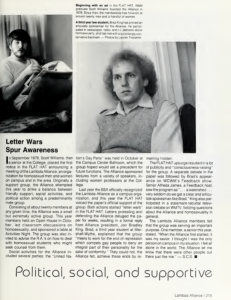 Lambda Alliance page in Colonial Echo, 1981
Lambda Alliance page in Colonial Echo, 1981
In 1981, the Echo's article on the Flat Hat noted "The FLAT HAT changed its outlook somewhat from last year with more liberal viewpoints, in-depth series reporting, bigger pictures and more graphics. According to John Bloom, the paper believed discussion of almost any issue could be valuable; consequently, even though it might have 'raised a few eyebrows,' the FLAT HAT did not 'shy away' from controversial issues such as affirmative action and gay rights." (202) The Echo also devoted a full page to the campus controversy caused by the visibility of the Lambda Alliance (next page). One student also listed "Lambda Alliance, Treasurer" along with his campus affiliations by his senior yearbook portrait. (379)
After 1981, LGBT presence in the Echo was nil until 1985, when The Lesbian and Gay Union was featured under "Profile of a Student." The article details LGU events on campus and quotes members as saying they received no negative backlash from the campus community. Yet, the feature is listed in the Echo table of contents as "The LGU Controversy," despite the article lacking a strong indication of the group being actually viewed as controversial:
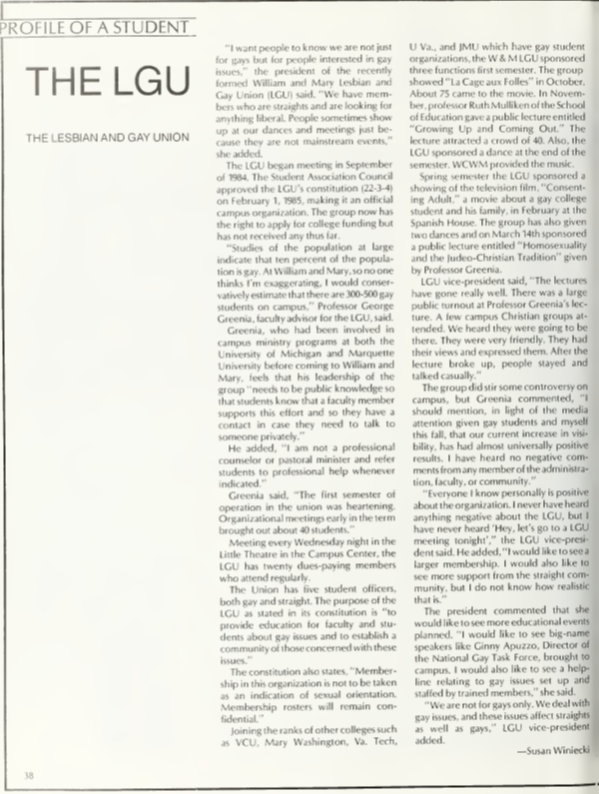 The LGU, Colonial Echo, 1985
The LGU, Colonial Echo, 1985
 "Discrimination continues on campus" letter to the Editor, Flat Hat, 1989
"Discrimination continues on campus" letter to the Editor, Flat Hat, 1989
In 1989, the college held a ‘Gay Awareness Week’ which including lectures from professors in the psychology department (Echo 1989 p.109). In 1990, William &Mary became the first college in Virginia to include sexual orientation in its non-discrimination clause. As members of the gay student group Alternatives note, however, the campus remained a hostile climate for many.
 "Gay community assesses campus climate," Flat Hat, 1992
"Gay community assesses campus climate," Flat Hat, 1992
Visibility and tolerance increased throughout the 1990s. In 1992, The Flat Hat ran a two-part series on the experiences of gay students at W&M.
The 1995 issue of the Echo opened with a tribute to diversity using an Audre Lorde quote and listing identifiers including lesbian, gay, and bisexual. (9) It also featured a portrait of Megan Widmeyer, president of the Gay Student Union. (41) Also listed is the Gay Student Association, a "Student organization concerned with issues and interests associated with gay, lesbian, bisexual, and inter-racial relationships." (197) Professor George Greenia, faculty member and self-described gay activist, lists the following campus groups: Gay Student Support Group, Alternatives, SAGE, W&M GALA, and Gay Bible Study Group. (239)
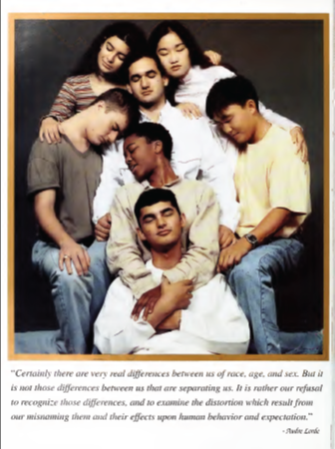
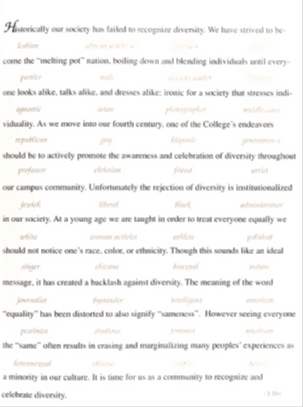
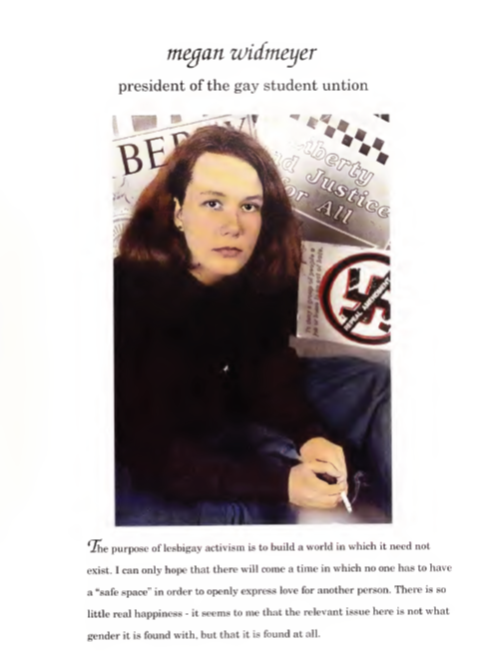 Colonal Echo, 1995
Colonal Echo, 1995
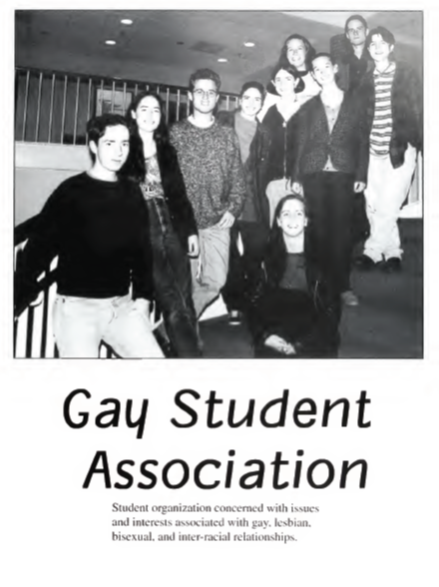
By 1999, the presence of LGBT student groups in the Echo had dropped off entirely.
Special Collections maintains a catalogue of student groups on its guide to the College, as well as the Special Collections Wiki page.
Linda Monahan is a graduate student in American Studies and a 2013-2014 Archives Apprentice in the Special Collections Research Center, Swem Library.